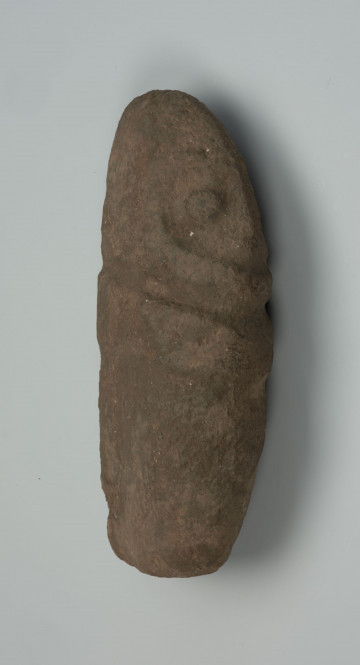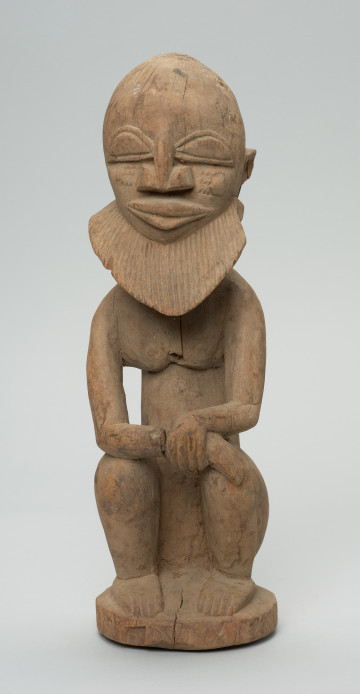
Figure - ancestor
między 1951 — 2000
National Museum in Szczecin
Part of the collection: Collection of Dogonian art
The Dogon have been known by many names throughout history. A large number of these designations, mainly exoethnonyms, reflects the complicated and complex interethnic relations and history of West Africa. The earliest references to the Dogon country are in the 17th-century chronicles Tarikh el-Fettach (Chronicle of the Seeker) and Tarikh es-Sudan (Chronicle of Sudan) written in Arabic and found in Timbuktu. They contain information about Hadjar - the land of stones. In the 19th-century literature, the peoples inhabiting the Bandiagara Escarpment were called Tombo (the name given to the Dogon by the Bamans) or Tombola. At the beginning of the 20th century, the term Habe (singular: Kado) appeared in reference to the Dogon. This word comes from the Fula language and means stranger, infidel, heathen, slave. The Fulbe used this term to refer to all black people (they consider themselves white) who were not followers of Islam. Due to the incredible popularity of the Fula language, this ethnonym was also adopted among other Islamised neighbours of the Dogon. In all studies from the beginning of the 20th century, among others by Louis Desplagnes, a French traveller and Leo Frobenius, a German ethnologist, Africanist, the Dogons are called Habe. Other neighbouring peoples had their own names for the Dogon. The Samo call them Dyipo, the Bwaba call them Tombon, the Dioula call them Kaado, the Mossi call them Kibsi, Kipsi or Kipirsi, the Kurumbas call them Akibani (people of the north), while the Songhai call them Jennawellam.The endoethnonym (i.e. a name by which the interested parties define themselves) Dogon (singular: Dogo) was first used in literature in the 1930s by French ethnologists, participants of the expedition Mission Dakar-Djibouti. The etymology of this word is difficult to establish. Some believe it comes from dogo - a wild, repulsive herb that cannot be destroyed, others derive it from dogo-no, which can be translated belonging to the family of those who have honour.
Ewa Prądzyńska
Author / creator
Dimensions
cały obiekt: height: 22 cm, width: 7,6 cm
Object type
figure
Creation time / dating
Creation / finding place
Identification number
Location / status

między 1951 — 2000
National Museum in Szczecin

między 1901 — 1950
National Museum in Szczecin

między 1951 — 2000
National Museum in Szczecin
DISCOVER this TOPIC
National Museum in Lublin
DISCOVER this PATH
Educational path